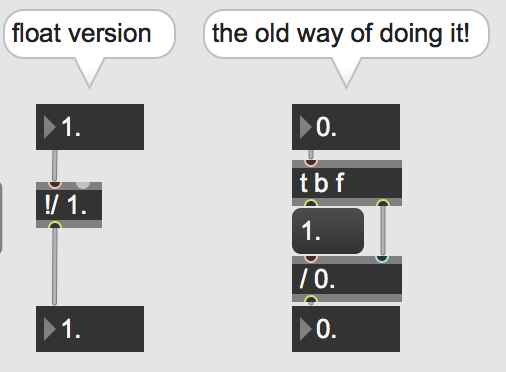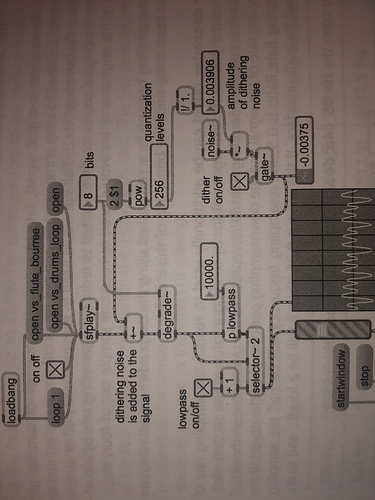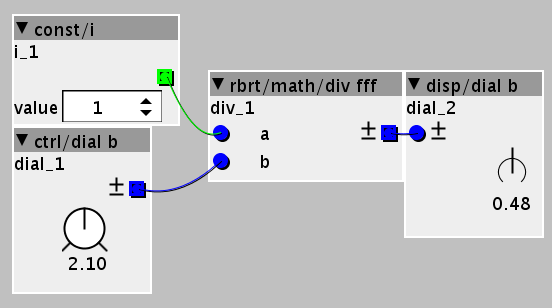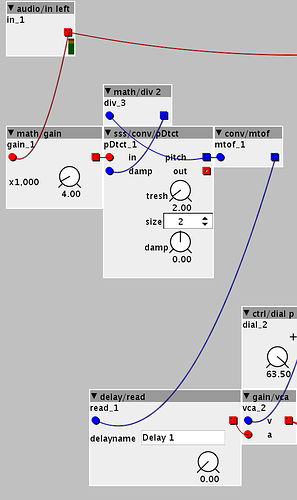For a trigger bang float, all it does is create a specific order of how the outputs of the object is processed. If Max works the same as Pure Data, which I am pretty sure it does, the order of processed output is right to left. The data will be processed in this order:
1. Float output.
2. Bang output.
What happens on the right side of the image you posted, where you are using the trigger bang float object, first you set the incoming value to the float output, and then you trigger the "1" value from the bang output, to get the result.
The reason for having to to this in Pure Data and Max is because objects has hot and cold inlets. In control rate objects, like the division object you are using, the right inlet is COLD inlet, which means its not actually processed before you do something to the left inlet. The right value is stored until a value is send to the left inlet and then you get the result.
So you always have to set the right inlet first and then send value to the left input and that is basically what's the trigger bang float is used for here.
In Axoloti you don't have to think about that, as all inlets are hot, control rate is updated 3000 times a second and audiorate is updated 48000 times a second.








